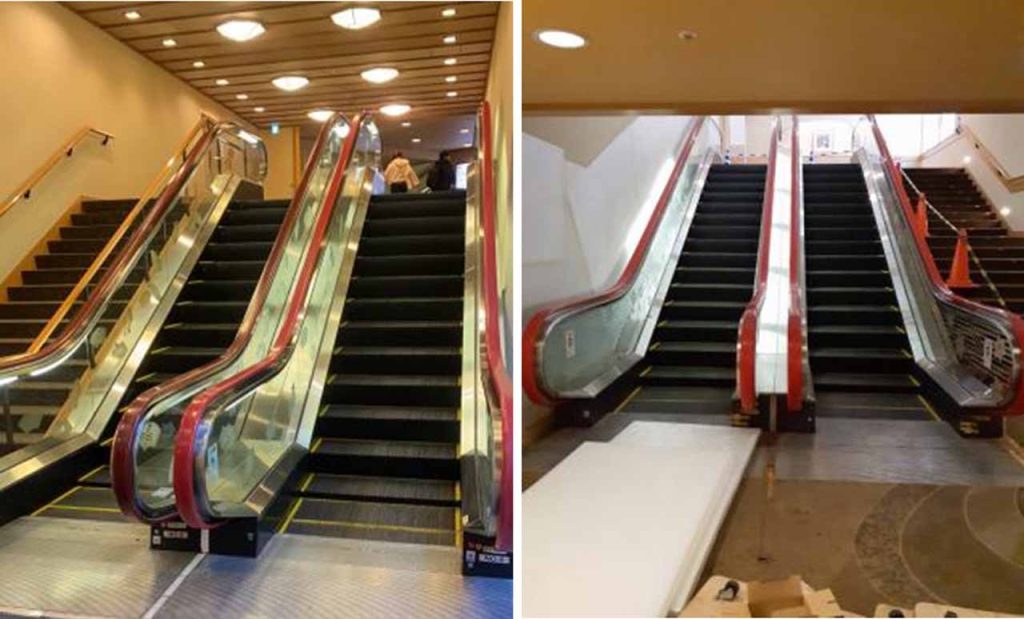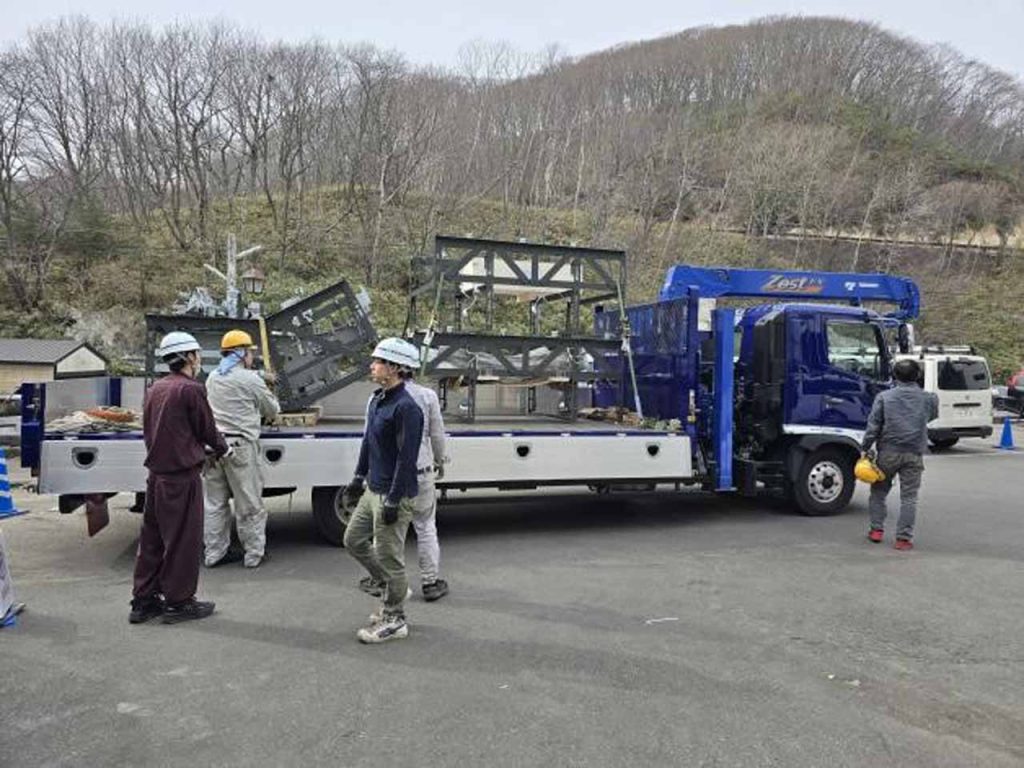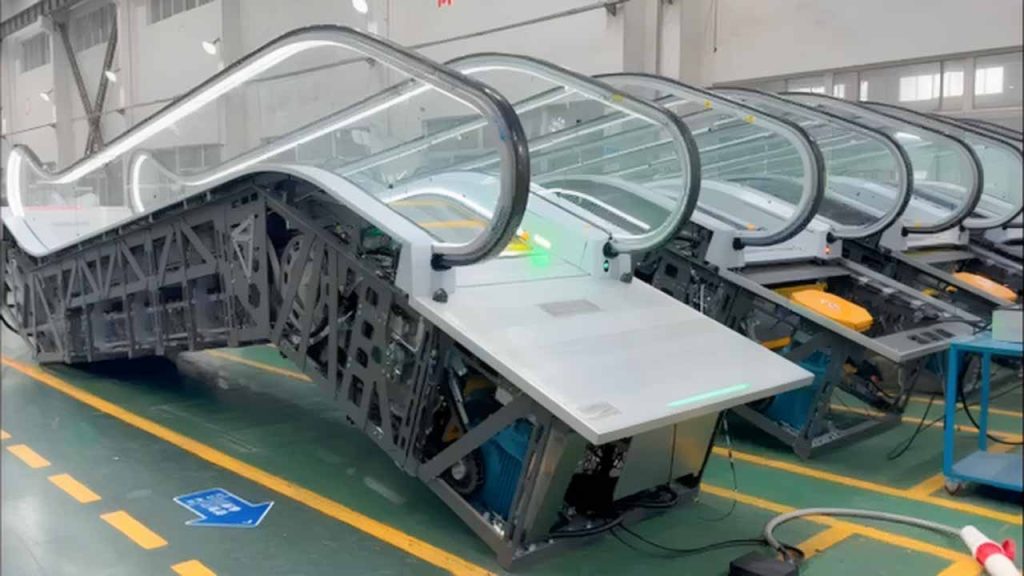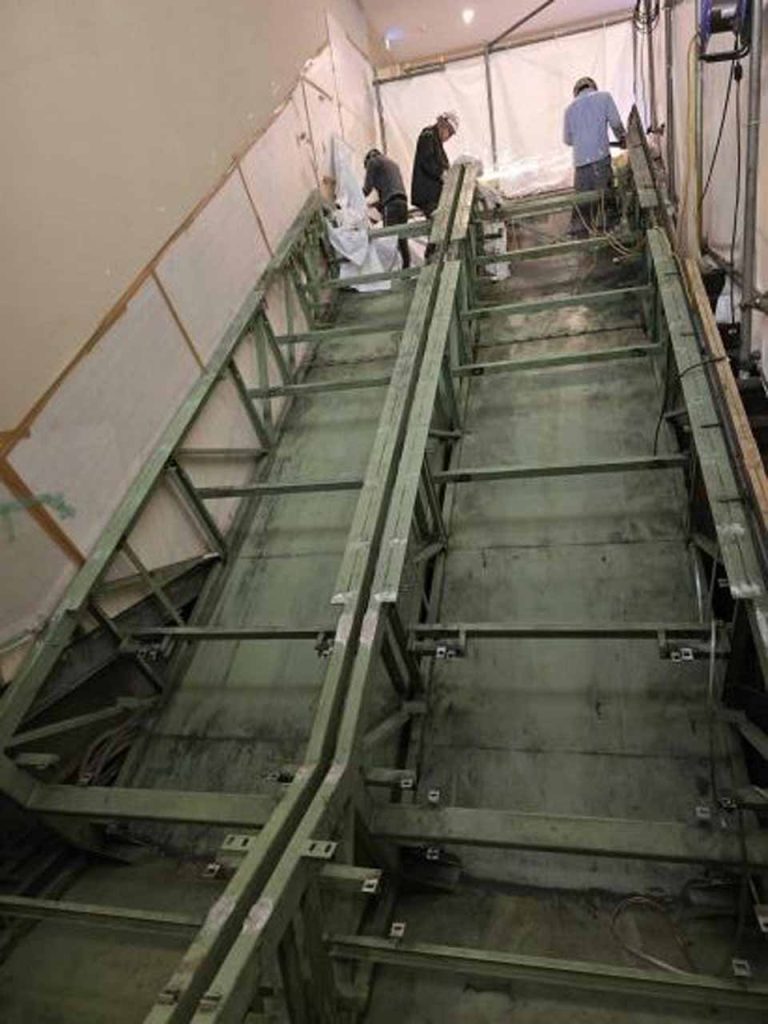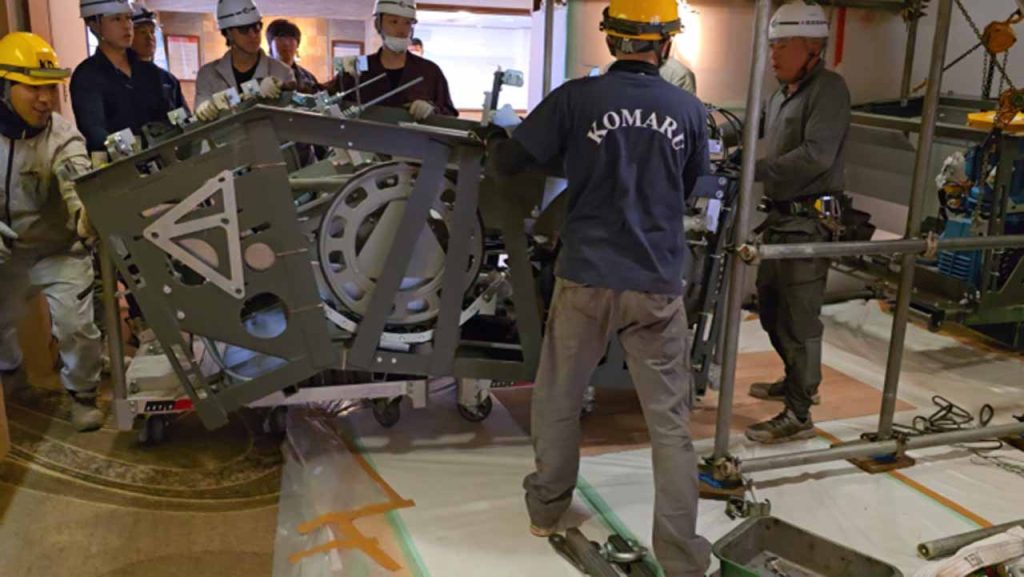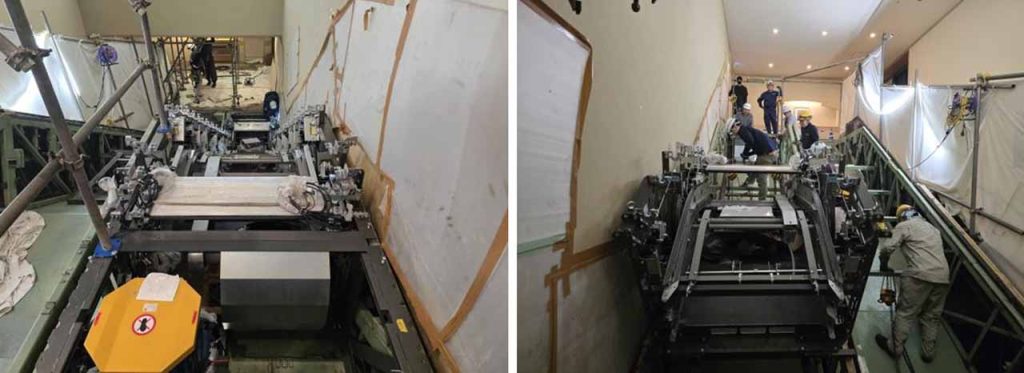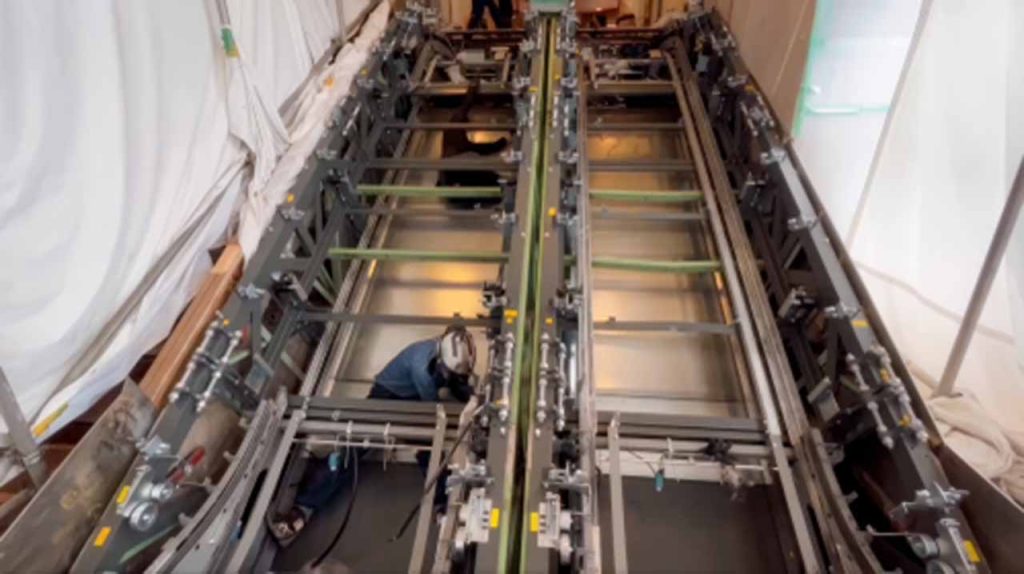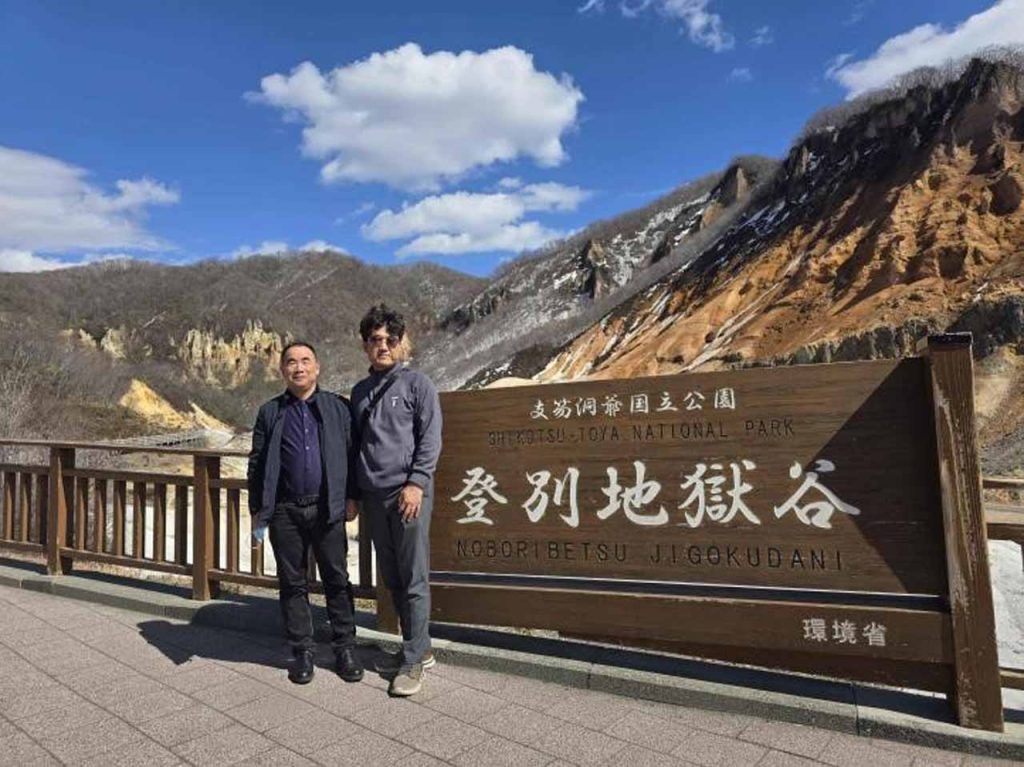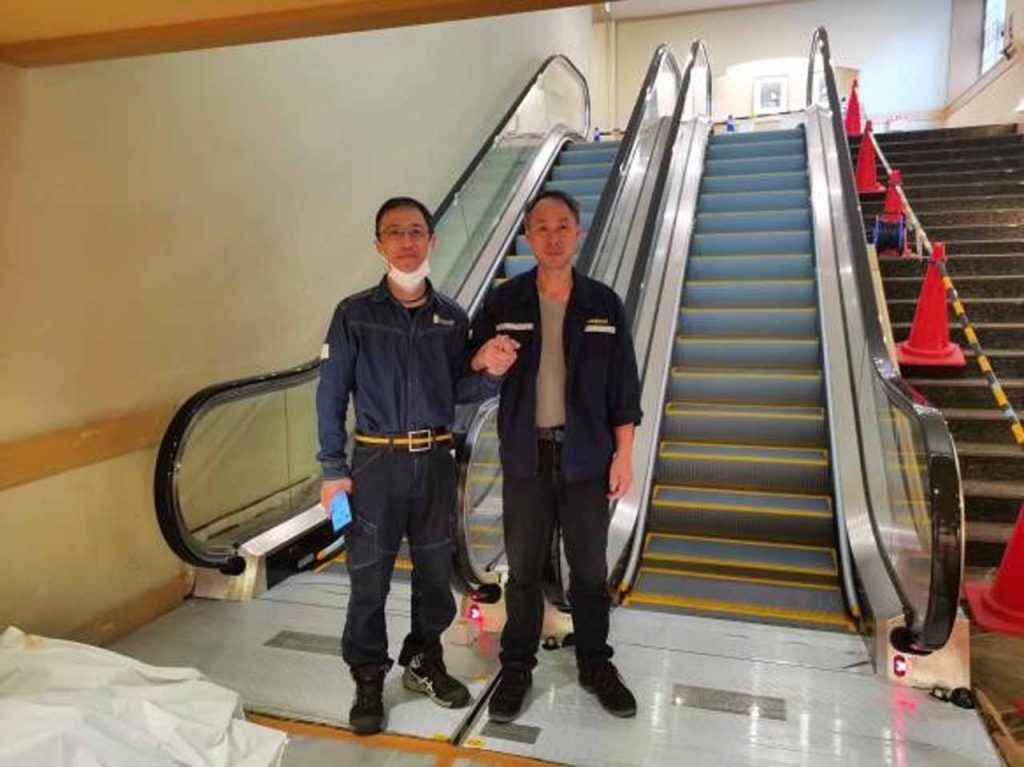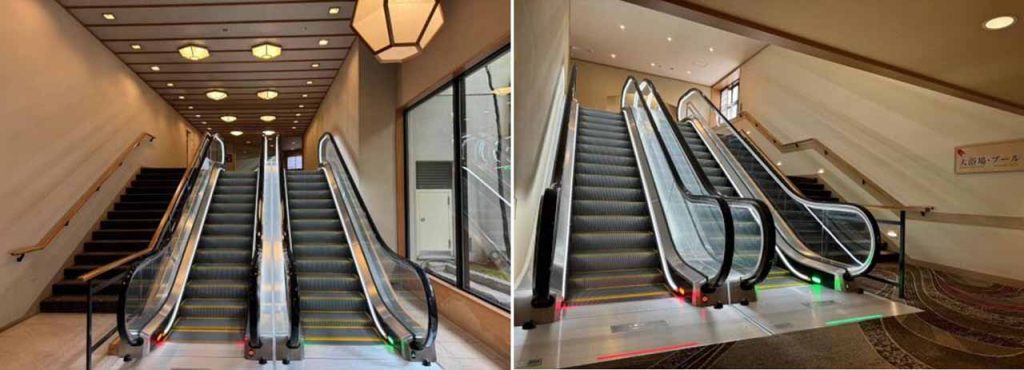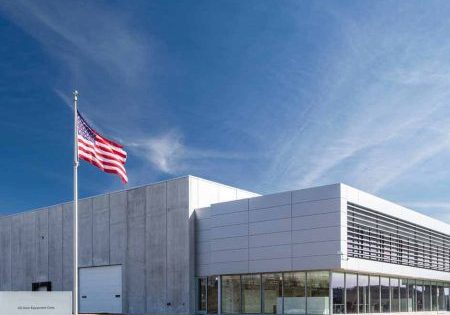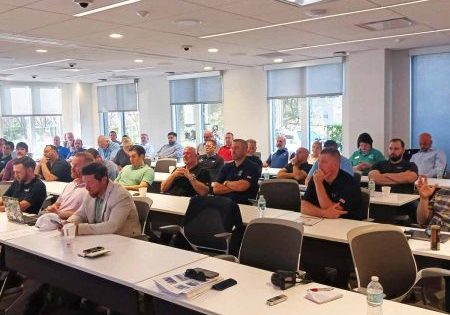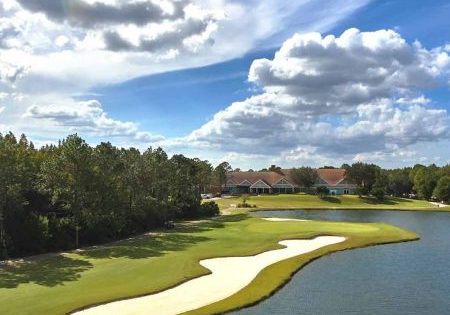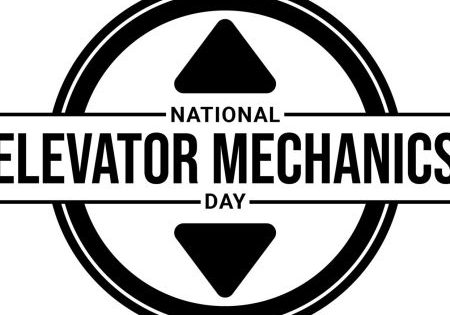Takimotokan Hot Spring Resort
Apr 1, 2025
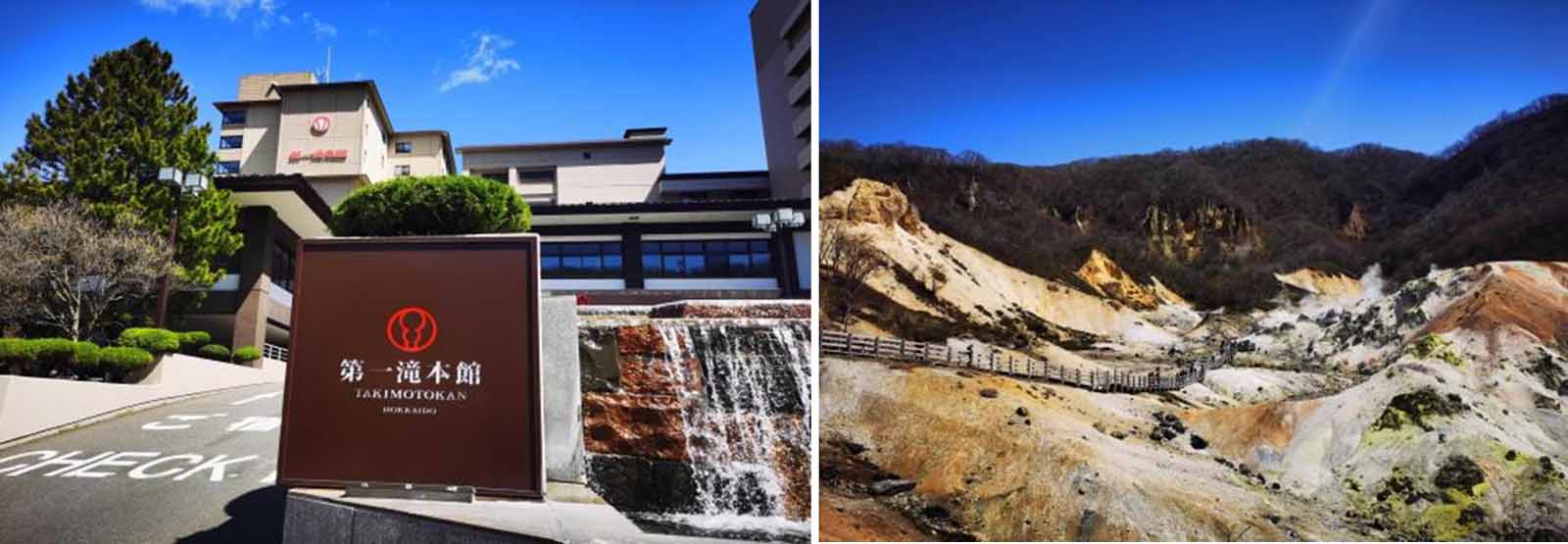
Escalator modernization in Japan using new EME technology
submitted by Patrick R. Bothwell on behalf of Suzhou Hanson Elevator Co. Ltd.
From March 29 to April 26, 2024, the four original Otis escalators located at the Takimotokan Hot Spring Resort in Noboribetsu, Hokkaido, Japan, were modernized by Hanson’s embedded modernization escalators (EME) technology with a total construction period of four weeks. The process of modernization had no impact on the owner’s business or the building structure of the hotel.
Noboribetsu in Hokkaido, Japan, is known for its geothermal hot springs, and being the first to open in the area in the last century, Takimotokan Hot Spring Resort is the most famous resort in the area.
The existing building of the Takimotokan Hot Spring Resort was built in the 1980s and is equipped with a total of six Otis-506 escalators. In early 2024, the hotel launched a modernization initiative that included updating four of the escalators.
The hotel’s business is very prosperous, and the owner did not want to close for renovation, nor did he want to destroy any of the existing interior building décor, including the iconic carpets, which are a symbol of the hotel, that connect with the escalators.
As a result of customer requirements for the escalator modernization, we set out to prioritize rapid and lightweight transportation along with precise design and installation so as not to damage the existing building interior and to interface precisely with the existing floor, achieving a perfect update of the escalator.
Suzhou Hanson Elevator Co., Ltd. from China provided a complete update solution and provided four EMEs, which Hanson globally released in 2020. Hanson has applied for and been granted patents for a number of the EME’s innovations.
Through its evolved design and engineering practices around the world in recent years, EME has become a highly praised solution with distinctive features in the modernization of escalators for retaining the existing truss.
The most significant feature of EME is the complete preservation of the existing truss (including the transverse members), while embedding a complete modern escalator within it.
This embedded escalator also has a complete rigid truss, which is composed of modules connected by bolts, each with a length less than 2.4 m.
The EME is assembled and commissioned within the Hanson factory just like a regular escalator. After disassembly and packaging, it can be flexibly transported to the site. The temporary tracks for module scrawling are laid within the existing trusses, and each module is successively moved into the designated position by a winch. High-strength bolts are then used to connect and secure all the modules, creating a brand-new, fully embedded escalator within the existing truss.
After each module is embedded in place and connected, it is welded with the existing truss at the pre-determined connection points. The strength of the new and existing trusses is greatly improved after being combined, which ensures the strength of the existing truss.
The design characteristics of EME result in fast and reliable installation. Since it does not require precise measurement of all structural components of the existing truss (it only needs to meet the embeddable width and depth of the EME module), it can achieve standardization and serial manufacturing of individual modules.
As such, the EME is not only an updated solution for escalators but also a new generation of standardized escalator modernization modules. Hanson has successfully developed two series of EME: both commercial and heavy-duty types. The EME cases of the heavy-duty public transport type have also been successfully implemented in some metro projects.
The EME project at the Takimotokan was carried out by local Japanese contractor Elevator Communication Co. Ltd., for on-site installation.
Initially, it took seven days to enclose, remove all existing escalator components, polish, clean and repaint the existing truss.
To prevent any damage to floors and carpets, surface protection was laid down along the route for module handling with small hydraulic trucks for transportation.
The EME module integrates the escalator components as much as possible and is installed and commissioned at the Hanson factory, significantly reducing on-site assembly work. Compared to other conventional methods of installing on-site, the EME solution not only improves work efficiency by at least five times, but also ensures installation accuracy and quality of the final product. As such, EME has a significant competitive advantage over other escalator modernization solutions that retain the existing truss.
After the module was transported to the site, the winch was used to sequentially move each module to its designated position through the temporary tracks that have been laid out.
After connecting the modules of EME lengthways to crossways positioning, level adjustments are required to ensure that the steps can avoid the transverse members of the existing truss and will run smoothly.
The average job-site team installing the project consisted of six mechanics, with an average daily working time of 8 h.
After the first steps are installed and run around the entire step band smoothly, subsequent installation and buildup work is the same as installation of a new standard escalator.
For the Japanese installation team installing the EME for the first time, completing the installation on schedule under the guidance of Hanson technicians was a challenge, but also a rewarding and memorable experience.
Demolition started on March 29, and the project was handed over on April 26 with a total period of 28 days, fulfilling the commitment to and receiving high praise from the owner.
The EME update project at Takimotokan marks a new record for escalator modernization in Japan. These are the 38th to 42nd EMEs to be successfully updated and installed outside of China since the first EME landed at the Singapore Textile Centre in October 2020.
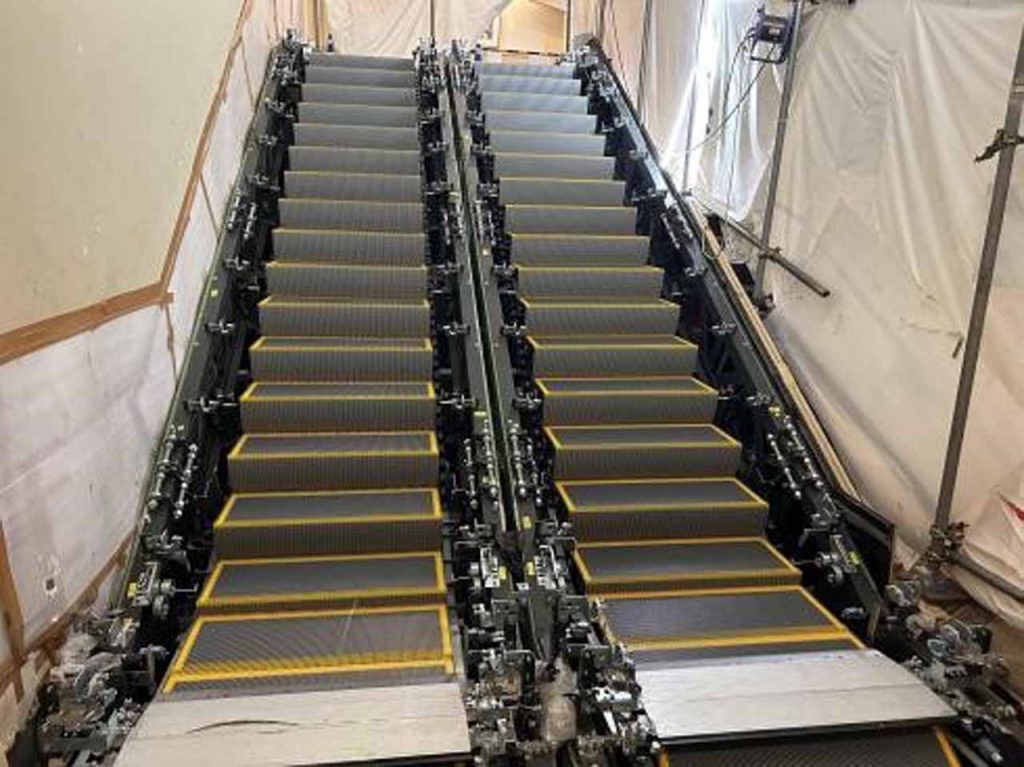
Get more of Elevator World. Sign up for our free e-newsletter.
